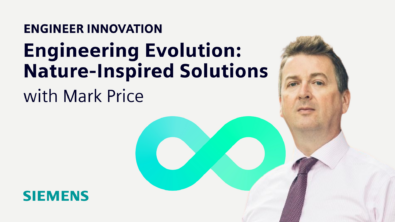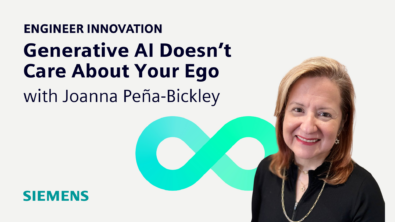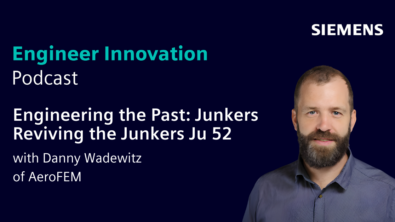Boosting Norwegian Hydropower using the Executable Digital Twin
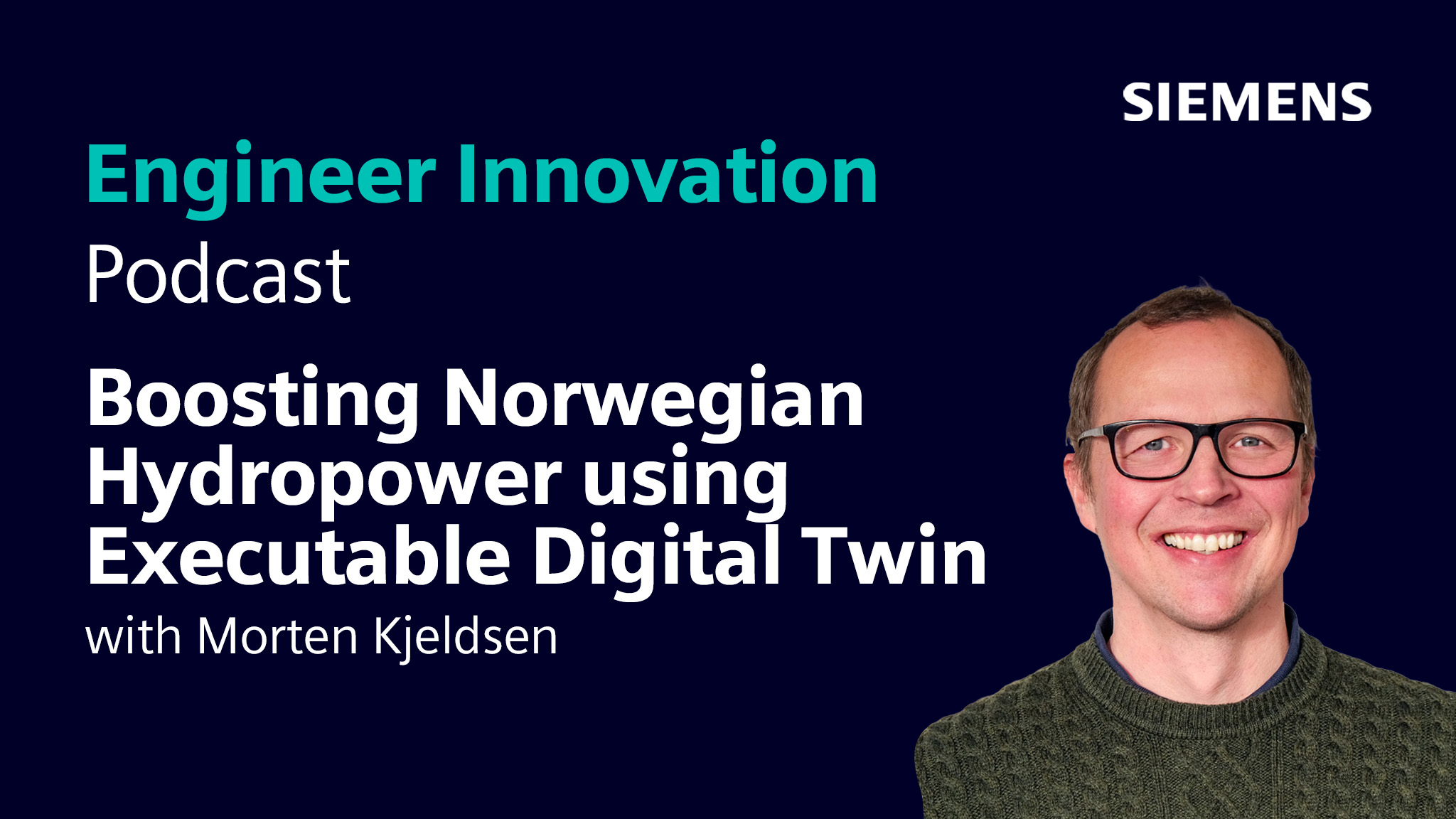
Listen to the Engineer Innovation podcast on
In the battle to decarbonise our electricity supply hydropower is a key weapon (in those places where geography permits). It can be either a source of green energy (as rain fills up mountain reservoirs) or, in the case of pumped hydro, a partially “self-recharging battery”, storing excessive green energy for later use.
Dialling hydropower up and down in response to demand has its own challenges though, due to the massive scale of these plants and the consequence of forces generated by millions of litres of water cascading from a great height.
In the latest episode of the Engineer Innovation podcast, I talk to Flow Design Bureau’s Morten Kjeldsen about using engineering simulation to create “virtual sensors” that allow operators to understand how a hydropower station is performing in real-time.
We have tens of kilometres of piping and tunnels filled with water running through a penstock which takes water for a high level to the turbine – it can be anything from 200 to 1200 metres of head. You have all this inertia when you change your operating conditions, which can generate massive oscillations. If you’re not very careful, bad things can happen…”
Morten Kjeldsen, Flow Design Bureau
We discuss:
- The challenges of running a demand-responsive hydropower plant
- The consequences of getting your flow control wrong
- Building virtual sensors using simulation and edge computing
- The digital twin from the plant operator’s perspective
- Using legacy equipment outside of its original design specification
This episode of the Engineer Innovation podcast is brought to you by Siemens Digital Industries Software — bringing electronics, engineering and manufacturing together to build a better digital future.
If you enjoyed this episode, please leave a 5-star review to help get the word out about the show.
For more unique insights on all kinds of cutting-edge topics, tune into siemens.com/simcenter-podcast.
- The challenges of running a demand-responsive hydropower plant
- The consequences of getting your flow control wrong
- Building virtual sensors using simulation and edge computing
- The digital twin from the plant operator’s perspective
- Using legacy equipment outside of its original design specification
Stephen (00:29):
So this is one of a series of interviews I conducted at this year’s Realize LIVE Conference in Munich, uh, and the intention was that I lock myself in a room with 20 different engineers and talk to them about how they’re using simulation and tests at a cutting edge of industry. In this episode, I talk to Morten Kjeldsen from Norwegian company Flow Design Bureau about engineering the hydrodynamics of huge Norwegian hydroelectric power plants and actually what turned out to be one of the best examples of a real life executable distal twin that I’ve ever come across. I started off by asking Morten to introduce himself.
Morten (01:07):
My name is, uh, Morten Kjeldsen, or Kjeldsen, as we say in Norwegian and, uh, I work for, uh, a, small, uh, business, uh, Flow Design Bureau in, um, Stavanger.
Stephen (01:19):
It’s a small business but it’s been around for a while now, hasn’t it?
Morten (01:22):
Yeah, it’s been, uh… we started it in, uh, 2002, uh, and then, um, but I’ve been a bit on and off, so I had a little, um, stay at… as a professor at NTNU in Trondheim, uh, for a while, and, um.
Stephen (01:38):
And so, is Flow Design Bureau your consultancy?
Morten (01:41):
Uh, well, uh, both. It’s, uh, so we also do, uh, actual products. So we have this one, um, what we call flow control. We try to, um, attenuate the dynamics and pressure pulsations in flow machinery, such as pumps and turbines. And lately, we also, um, started to be h- uh, for us to be big in, uh, in the digitalization of, uh, of hydropower. So its, uh… But then we are on the power plant, so we are, um, adding our own, uh, sensors, uh, and, uh… but we also gather, uh, from third parties, you know, um, uh, control units, protection units, and we create this, um, uh, data flow and we, um, also, um, you know, have a big, uh, focus on, uh, cybersecurity. So we managed to take all this raw data from the plant into more, um, I was going to say, accessible IT zones where you actually can do stuff, uh, you know, on that data forum.
Stephen (02:44):
So you’re generating a huge amount of data.
Morten (02:46):
Yeah.
Stephen (02:47):
That data is completely useless and-
Morten (02:48):
(laughs).
Stephen (02:49):
… and until you package it, clean it and use it to make decisions, isn’t it?
Morten (02:54):
Yes, exactly. So, uh, so you could say that, uh, so we have… so generate that transport of data and then, um, one end station is like, uh, a time series database. We can also have, um, ways to, um, transfer to cloud. Um, actually, Amazon Cloud is, uh, the one we use. And, uh… But then again, like you say, once the data is there, it’s just data (laughs).
Stephen (03:20):
Yeah.
Morten (03:20):
You need to do something with that. And, uh, and of course, we are, um, engaged in that as well. What’s relevant for, uh, this meeting is, um, uh, what we can do is what we call edge analysis. I mean, one buzzword, uh, (laughs) in this meeting is this, um, executable digital twin. Uh, so, you know, that’s the kind of, uh, thing we can have on the, on the edge. Yeah.
Stephen (03:45):
Well, there’s… so there’s lots of tour-
Morten (03:46):
Yeah.
Stephen (03:47):
… at this meeting, elsewhere, uh, executable digital twins and, uh, the components you’ve already described are lots of the components of the executable digital twin. Are we calling it digital twin yet?
Morten (03:57):
Um, not yet. It’s, uh, I would say, you know, I’ve been saying it’s more of a virtual sensor, but in many ways, that’s a subset of a digital twin.
Stephen (04:08):
Yeah.
Morten (04:08):
Because you need, um, a good model to actually establish that, uh, that sensor.
Stephen (04:13):
Why would you need a virtual sensor, rather than a regular physical sensor?
Morten (04:17):
Yeah. So, no, I kind of me to explain a bit about hydropower in Norway. And, um, so what’s very, uh, untypical with hydropower in Norway is that we, uh, we pull water from, um, lakes high up in the mountains and, um, on the way to the actual power plant, uh, we have, uh, long tunnels and water conduits. So, I mean, it can be tens of kilometers of piping and tunnels filled with water before it make, uh, you know, the final run through, uh, what we call a penstock, which, uh, takes water from, uh, say, a high level to the turbine level.
Stephen (04:59):
Yeah.
Morten (05:00):
And, you know, it can be anything from 200 to 1,200 meters head-
Stephen (05:04):
Okay. Wow. Yeah.
Morten (05:05):
… pressure difference. But, uh, the fact that, uh, you have those, uh, long tunnels, uh, makes, um, uh… you have all this inertia when you change your operating condition, I mean, your load setting. Uh, say it stopped blowing in the North Sea and your wind farms are, um, you know, out of business, then, of course, Norwegian hydro can just increase their power production and… but then you start something bad.
Stephen (05:34):
Yeah.
Morten (05:35):
Yeah.
Stephen (05:35):
So basically we’re talking about energy storage, yeah? So you, you pump it up there when electricity is cheap, when you’ve got an excess of wind power or whatever, probably wind power in Norway. And then when the wind is low, you can re-utilize that energy. So it’s like a big battery, basically.
Morten (05:50):
Yeah, yeah. And, uh… But, uh, we are, we are… The battery up to now without, uh, you know, the pump storage, because it’s, uh, like we started today, it’s raining (laughs) quite a bit in Norway. So we have, uh, enough to just, it’s the battery is charging naturally (laughs).
Stephen (06:09):
So it’s self-charging batteries.
Morten (06:10):
But, uh, yeah, but you know, but in the future, I think the demand will be much higher. So there are huge plans for a huge, uh, uh, reversible pump, um, storage plants, so on.
Stephen (06:22):
And you have the geography for that, don’t you? So can… you’ve got lots of high places in which you can pump water up to if you need to as well. So I live in the UK, and it’s a bit flatter, so we don’t have much hydro.
Morten (06:32):
Yeah, but I think even in, uh, in the UK, you have plans for, um, you know, this pump storage, uh-
Stephen (06:39):
Yeah.
Morten (06:40):
… for the same reason that you have… now we have this new renewable-
Stephen (06:43):
Yeah.
Morten (06:44):
… that, uh, solar and wind, and they are more intermittent.
Stephen (06:47):
And that, that kind of grid level storage is one of the big unsolved… well, it’s not unsolved, we, we know how to solve the problem, but it’s one of the… it’s we don’t have capacity at the moment, do we as well?
Morten (06:56):
No.
Stephen (06:56):
Which, I’m, I’m, I’m, I’m not sure about in Norway, but in most places what takes up that slack is gas turbines and so if the wind’s not blowing we switch up the gas turbines, but you’re… what you’re doing is altogether much greener, more sustainable-
Morten (07:10):
Yeah.
Stephen (07:10):
… and more fun as, well I guess.
Morten (07:12):
Yeah, but, uh, to return to, uh… So it’s not, uh… it’s a penalty, uh, having this, um, you know, um, power reserve or battery, um, function. And, um, the penalty is that, uh, when you, um, try to, um, increase or decrease, uh, uh, power output from the power plant, then, um, you start to create all these, uh, mass flow oscillations in the, uh… those huge long tunnels.
Stephen (07:39):
Yeah.
Morten (07:39):
One thing they can do is like destroy the tunnel because it kind of… it’s tunnels in the rock so it kind of can, uh, wear down the tunnel.
Stephen (07:47):
Kind of erosion kind of thing.
Morten (07:48):
Erosion, yeah. And, uh, and then also has this, uh, transport thing that it kind of brings rocks and sediments towards the turbine units, which is obviously bad. (laughs)
Stephen (07:59):
Yes.
Morten (08:00):
And then, uh, so now we come back to the virtual sensors, because we have, um… it’s really difficult to instrument-
Stephen (08:09):
Yeah.
Morten (08:09):
… you know, to know what happens in those tunnels in terms of, uh, say, velocity. And you have these surge shafts where the, you know, the level is, is going up and down quite a bit. Uh, it’s they are not very accessible, those places. It’s, uh, high up in the mountains, it’s, uh, like I said, long tunnels and, um, the virtual sensor is basically… And, um, we have a dynamic model of the power plant. Uh, we just use, uh, selected inputs like the reservoir levels, some… that’s the, the charging state. So that- that’s the big value for the plant operator.
(08:45):
Uh, and then we use the input, um, or the expected flow rate of water running through the turbine unit as the input, uh… the other input. And then, uh, with those inputs and with, um, a good model, you have, uh… you can start to find those, um, surge shaft level fluctuations, the tunnel flow rate oscillations, and, uh, you can display them in real time. So the operator, he knows, uh, what’s going up, uh… goi- going on up there in, uh-
Stephen (09:15):
Yeah.
Morten (09:15):
Yeah.
Stephen (09:15):
That’s what, uh… which is, which is really useful and really incredible as well.
Morten (09:18):
Yeah.
Stephen (09:18):
How did you build this model?
Morten (09:19):
So (laughs) my favorite software is this, uh, Simcenter Flomaster. I’m, of course, using Flomaster to, uh, to have the model, but then I do a more simplified dynamic model, more, uh, you know, homemade, um, uh, model, uh, that are implement directly in the, um, in the code, uh, we use on, uh… for this data acquisition thing. [inaudible 00:09:44]-
Stephen (09:44):
So you basically, basically program yourself.
Morten (09:46):
Yeah.
Stephen (09:46):
What language do you use?
Morten (09:48):
Uh, for that we use, uh, LabVIEW.
Stephen (09:50):
Okay. I didn’t know it. Yeah (laughs).
Morten (09:51):
No. (laughs) It’s, uh, it’s kind of like graphical programming software, but it’s used quite a bit for, uh, like, data acquisition and control, uh, engineering.
Stephen (10:01):
Yeah. Okay.
Morten (10:02):
Yeah.
Stephen (10:03):
Which is, and so, so that gives you a complete view of what’s happening across basically the whole of the, the hydroelectric process, I guess.
Morten (10:11):
Yeah. Uh, so, uh, as I said, those, uh, those virtual sensors, they pick up the stuff you didn’t know much more about (laughs) beforehand. But, of course, in the plant, you have, uh, plenty of, uh, data sources and, uh, knowledge. Yeah.
Stephen (10:25):
Yeah. And I guess, the person who’s, who’s controlling the plant is a simulation engineer. They just want the data, don’t they? So, they see the data presented in a format that they understand.
Morten (10:35):
It might be even worse because the one actually operating the plant is more looking at, uh, you know, uh, price, it’s, you know, production planning, uh, the value of the water (laughs).
Stephen (10:48):
Yeah.
Morten (10:50):
And, uh, so he’s not always that concerned about, you know, the state of, uh-
Stephen (10:56):
Yeah, or any big fluctuations in the system. Yeah.
Morten (10:59):
Yeah. But then, uh, this, uh, this virtual sensors and, uh, well, of course, all other inputs, they kind of give limitations on your, uh, operations. So that-
Stephen (11:10):
Yeah. I’m, I’m not sure, uh, hydroelectric power works or how it’s the economics of it. But with, I know about gas turbine plants, stationary gas turbines, so, and like, you have a contract with the power supplier and if you don’t deliver the amount of power that you’re gonna say you’re gonna power, then you have to buy it back elsewhere and that’s really expensive.
Morten (11:26):
Yeah.
Stephen (11:27):
Especially at the moment when the price of electricity is so high. So I guess, you know, those kind of… that kind of downtime, any problems that occur, are very, very expensive for the operators, are, are-
Morten (11:35):
Oh, yeah. Oh, yeah. So it’s like you say, I think, uh, the way that the power market works in, uh, at least in the Nordics, is that, uh, you actually have this, um, agree on production and you… and consumption the day before, and then you plan, um, the next day. If, say, your unit is, uh, auto-operation, but you have actually sold, um, the production from that unit, then you, uh, you have a big penalty (laughs).
Stephen (12:02):
So, so, like you said-
Morten (12:02):
Yeah.
Stephen (12:02):
… you’re, you’re in, in kind of transit operation where you’re ramping up, ramping down, you, you can have these problems. I’m guess when, when these plants designed, they were designed in a day when there was wind… fewer wind turbines and fewer… there were… It was much more controllable. Um, you know, I guess, going back to-
Morten (12:17):
Yeah.
Stephen (12:17):
… gas turbines again now, lots of gas turbines were, were base load gas turbines, supposed to be running at full power all the time.
Morten (12:23):
Yeah.
Stephen (12:24):
And now they’re being used in conditions that were never… Because they’re being switched up and switched down. And that’s where these problems are coming, I guess.
Morten (12:29):
Mm.
Stephen (12:29):
It’s probably outside quite… outside of the original design spec for some of these facilities.
Morten (12:34):
You’re, uh, absolutely right. And, and, uh, the most common turbine unit in Norway is, uh, is, is like this fixed design, so it’s you can only adjust, uh, you know, the amount of water running into them. It has its best efficiency point. And, you know, the ideal, when they were made, I mean, the huge, uh, construction works for hydro in Norway was like in the ’60s, ’70s, ’80s. Uh, at that time, it was, uh… they were just made for being very close to that best efficiency point. Uh, like you say, they… was this, uh, more perfect ideal conditions, uh, you planned your plan for? But no, it’s, um, it’s a different story. Yeah.
Stephen (13:13):
Yeah. So that’s really interesting. So how difficult was it putting that model together and did you ha- did you have to, to validate it? I guess you have to validate it to some-
Morten (13:21):
Yeah.
Stephen (13:21):
… [inaudible 00:13:21].
Morten (13:23):
No (laughs).
Stephen (13:23):
(laughs).
Morten (13:25):
But what we can do is, uh… like I said, you have some input, but then you, you can, uh, save other input for, uh, you know, checking your model. So actually, we… since, uh, this is measurements, virtual sensors in the water conduit. So, uh, we use… as I say, the input is more, uh, the control of flow into the turbine unit. But we also, uh, have, um, pressure transducers just upstream the turbine unit. We don’t use that as input, but, uh, we… when we run the model, we check with, with that particular sensor, if, um… And then it’s the, the thinking is that if, if we actually manage to, uh, calculate that value correct then, uh, the rest of the system is, is correct. So it’s kind of a-
Stephen (14:08):
But, but that’s, that’s some sort of validation as well.
Morten (14:10):
Yeah.
Stephen (14:11):
And it, and it appears to work.
Morten (14:12):
Yeah.
Stephen (14:12):
So you dropped the word earlier cybersecurity. Is, is cybersecurity involved in this as well?
Morten (14:16):
Uh, yes. As I say, we are, uh, we are having, uh, uh, data sources within the… what’s called a process network or the OT, um, uh, network. Uh, and, uh, because that’s where you actually, um, uh… when we pull data from control units and protection units, those are the units that if you do something bad with them, then we can basically destroy your (laughs) your plant. So, uh, so it’s, uh, so we have two challenges. One is obviously the cybersecurity thing, but also our installation inside that secure zone should be, uh… don’t, you know, cause any problems for other units in, uh… So it’s, uh, so, it’s an issue, big issue. Yeah.
Stephen (15:04):
Yeah, it’s, it’s an issue because I guess the provision of water is a big strategic… you know, it’s a possible target for, for hostile action, isn’t it, as well.
Morten (15:12):
Yeah.
Stephen (15:12):
So you have to be aware of those things, definitely, so.
Morten (15:15):
Yeah. Oh, but I, I agree because, uh, that’s also my thinking that the digital twin, it, um… basically, it expand, uh, knowledge of your, uh, your full system, and because you can use like, um… I did the inputs and… but also, uh, other sensors for control over.
Stephen (15:35):
So when we just start, uh, discussing this you said you weren’t gonna call this an executable digital twin but it’s working in real time. Yeah.
Morten (15:40):
Mm.
Stephen (15:41):
You’ve got virtual sensors, you’re providing useful information, the state of the plant.
Morten (15:45):
It’s got most of the components.
Stephen (15:47):
Yeah. I think most people at this conference would go in and call it a digital twin, so.
Morten (15:52):
Yeah.
Stephen (15:53):
So, the, the huge amounts of data you have to deal with, um, have you considered using, uh, artificial intelligence, machine learning, any of that stuff you have involved in those projects, or is it still too soon?
Morten (16:04):
You could say that the one operator we, uh, deliver this service for in Norway, they have, um, a third party, um, that do the machine learning, uh, on the data we provide or [inaudible 00:16:18]-
Stephen (16:18):
Yeah, you’ve got that time series historical data.
Morten (16:21):
Yeah.
Stephen (16:22):
And you- you’re trying to predict some of these fluctuations.
Morten (16:25):
Yeah.
Stephen (16:25):
You know, it will be able to pick up signals eventually-
Morten (16:27):
Yeah.
Stephen (16:28):
… and do that as well. So, so, yeah, that’s a future app.
Morten (16:31):
And then, uh, I realized that, uh, the, the artificial intelligence is also, uh, useful in the sense that, uh, it doesn’t really distinguish much between, uh, engineering data, you know, like I said, the sensors, but it also takes, like I was going to say, written notes from, uh, technicians on site, and they actually process that as well together-
Stephen (16:55):
Yeah.
Morten (16:55):
… with engineering data.
Stephen (16:56):
So that… So you can aggregate all sorts of data, I guess-
Morten (16:59):
Yeah.
Stephen (16:59):
… well, in the future. So I’ve talked to… So if you go to the sessions downstairs, we’ve observed there’s not much AI in the presentations ’cause people are presenting what’s working now, you know, not what they’re-
Morten (17:11):
Yeah.
Stephen (17:11):
… working on as well. But in the conversations I’ve had up there, almost everybody’s using it in some small way and getting their… dipping their toe into it. ‘Cause it’s a, it’s a big thing, isn’t it? I think everybody wants to be able to keep on top of it. So it’s definitely one for the future. And I expect when we come back next year, we’ll see some f- a few real-life applications a- as well. Well, maybe it’s just a buzzword, because we’ve been talking about digital twins for, I think, eight years.
(17:35):
And, uh, and I think Gartner do this hype cycle thing where they predict new technologies, and new, and new technologies appear, and they go up to this peak of inflated expectation. And digital twin did that in 2017 or 2018, and they’re saying… you know, and then it disappears off the charts, ’cause you go into this kind of disillusionment where all the hype goes away and people have to do it. And they predicted that maybe in five years we’d start seeing the first-
Morten (17:58):
Yeah.
Stephen (17:58):
… proper digital twins, and that’s kind of where we are. So how long has this been running this, this? Is it a new thing this year or have you been-
Morten (18:05):
I would say it’s, uh… so I’m not the only initiative in Norway on this, uh, matter. And because it’s been, uh, such a, you know, uh, high level, uh, expertise in, uh, dynamics of hydropower plants in Norway. It’s been, uh, you know, early efforts on, uh, on digital twins in a way. You know, uh, so, um, so there is this parallel project that, um, actually a former colleague of mine is running. So he has been doing this for maybe 10 years, uh, which is basically a digital twin.
Stephen (18:36):
Yeah, so ahead of the curve on that one as well.
Morten (18:38):
Yeah, (laughs) but you know what? When he started I don’t think he, I don’t know, it’s-
Stephen (18:42):
Well, I think-
Morten (18:42):
… [inaudible 00:18:43].
Stephen (18:43):
I think digital twins is just people applying a name to… kind of everybody’s converging on, you know, as we get the computing power, we get edge computing, real-time data, cloud computing, all these things came together and people, engineers tend to use those things, don’t you?
Morten (18:57):
Yeah.
Stephen (18:57):
There’s no single definition of these things, but all these things end up looking kind of like digital twins which is really exciting. Now, how many people work at, uh, FDB?
Morten (19:05):
Uh, we are currently only six, uh, persons. So it’s, uh-
Stephen (19:08):
How, how many of them have got PhDs?
Morten (19:10):
Uh, it’s, uh, actually four.
Stephen (19:13):
Well, that’s a good, good percentage as well.
Morten (19:15):
Yeah. So, um, I don’t know, but it’s, uh… still, it’s I think, the beauty with, uh, with this small company is that we, you know, we can contribute in all, um, aspects, you know, from, uh, actually being at the plant, putting the sensors in the, uh, correct position, installing and, uh, upgrading the IT equipment we have there for, um-
Stephen (19:40):
Yeah. So pro- proper engineering, actually-
Morten (19:41):
Yeah.
Stephen (19:42):
… not just sitting in your office and-
Morten (19:42):
Exactly.
Stephen (19:42):
… [inaudible 00:19:43] and getting the results.
Morten (19:43):
No, no, no. My, uh, coverall is all, uh, oily and dirty, so it’s, uh, (laughs)-
Stephen (19:49):
Well, I’m gonna… if… When we publish this, or if we publish this, I’m gonna ask for a photo of you. And, and I guess, a lot of people’s PhD engineers, dressed in overalls, covered in oil. That’s, that’s what we wanna see, isn’t it? That’s real life engineering.
Morten (20:01):
Yeah.
Stephen (20:01):
Okay, that… and that’s really interesting stuff. Thank you. So how’s your experience been? Is this your first time at Realize LIVE or a Simcenter Conference?
Morten (20:09):
Uh, no, it’s, uh, been before, but, uh, that’s some years ago, before, uh, COVID. Yeah, so, uh-
Stephen (20:16):
A different world back then, wasn’t it?
Morten (20:17):
Yeah.
Stephen (20:17):
So it’s quite, it’s quite nice to be here and be back together face to face, isn’t it? ‘Cause virtual conferences and Teams meetings aren’t quite the same at all.
Morten (20:24):
Yeah. No, I agree. It’s, uh… And, you know, it’s, uh, I mean, it’s, this conf- this, uh, particular event has been just… I mean, in many ways, it’s so professional, but still you feel kind of all this charming stuff going on. It’s, uh-
Stephen (20:40):
I, I think it’s mainly just engineers talking to engineers. And we… sometimes we spend too much time staying in front of our computers or in oily-
Morten (20:46):
(laughs).
Stephen (20:46):
… oily cover rolls, and we don’t… and coming together and telling our stories and learning from other people is, uh-
Morten (20:51):
Yeah.
Stephen (20:52):
… is really important as well, I think. ‘Cause I think, you know, we’re saying yesterday that it’s… engineers are basically creative people and you wanna kind of share that creativity. So have you learned much from, from other people this week?
Morten (21:04):
Uh, yes, and, uh, as I said, you know, that’s probably the reason I go to places like this is to get some, um, inspiration and even guidance that, uh, I can, um, uh… If I work on a topic and, um, if I listen to somebody else who work on a similar topic, then, of course, I get some ideas, and, uh, I can, uh, even discuss with the presenter, you know, and try to share my thinking about the subject, and…
Stephen (21:32):
And, and learn from different applications in different industries as well-
Morten (21:35):
Exactly. Yeah.
Stephen (21:36):
… ’cause every single person I’ve talked to has been inspirational. And, um, and this has been one of my favorite interviews. So thank you very much.
Morten (21:42):
Thank you!
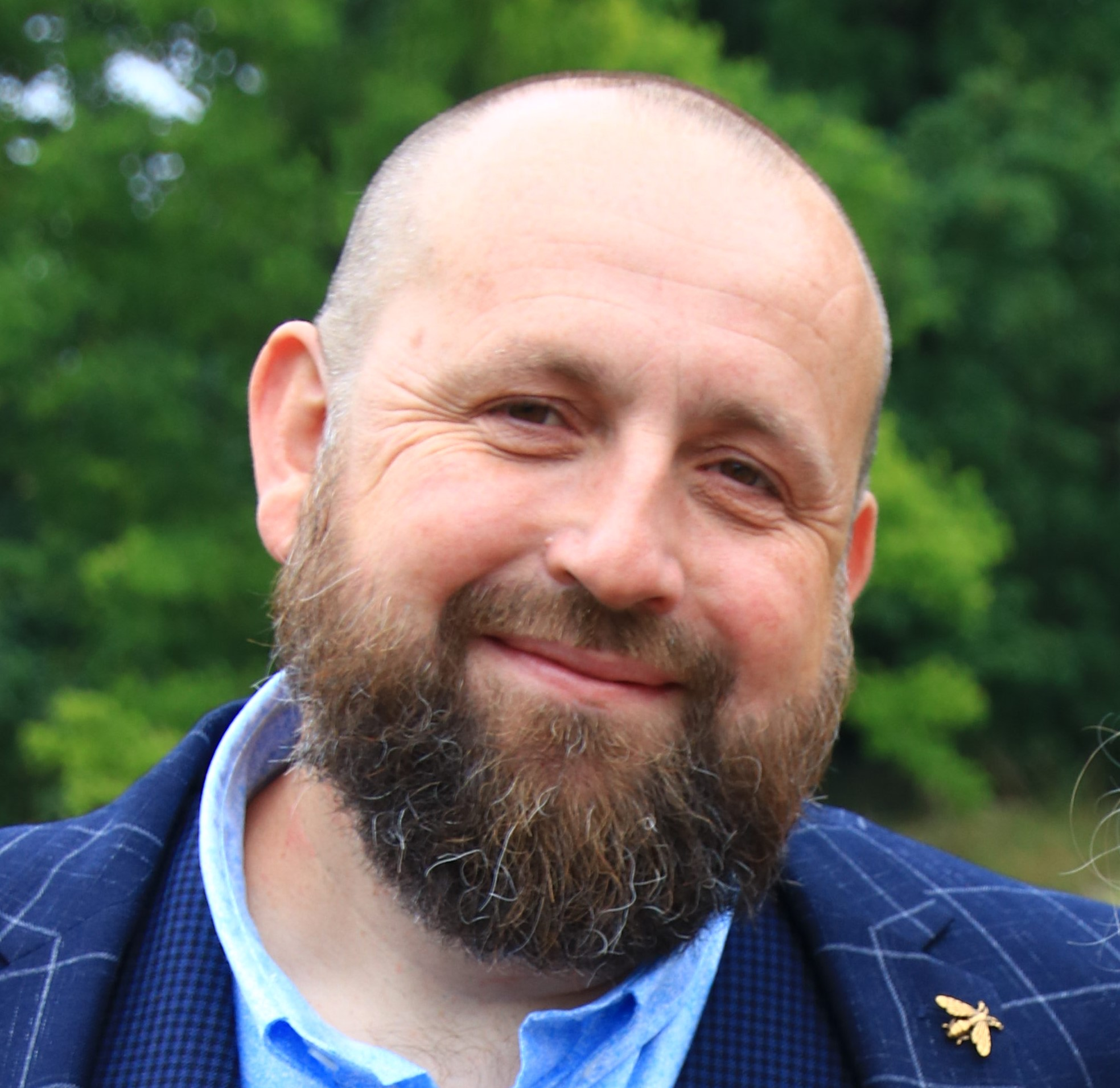
Stephen Ferguson – Host
Stephen Ferguson is a fluid-dynamicist with more than 30 years of experience in applying advanced simulation to the most challenging problems that engineering has to offer for companies such as WS Atkins, BMW and CD-adapco and Siemens. Stephen likes the “lovely crinkly edges” of fjords.
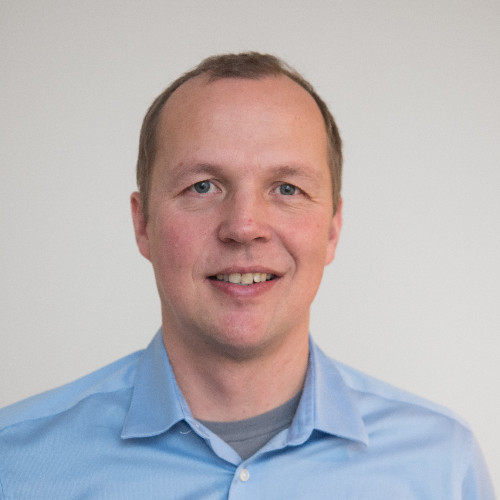
Morten Kjeldsen
Morten Kjeldsen, Dr.ing. Held professorships in Fluid Mechanics/Hydropower and Fluid Power at NTNU, Trondheim, Norway until 2010. Now CEO of Flow Design Bureau AS, Norway, with a current interest in products and solutions for digitalization within the Hydropower sector. WP Leader in the EU project AFC4Hydro. Morten describes himself as a “long-term satisfied and happy user of SIMCENTER Flomaster”.
Take a listen to a previous episode of the Engineer Innovation Podcast: “Adapting to a New Era of AI”
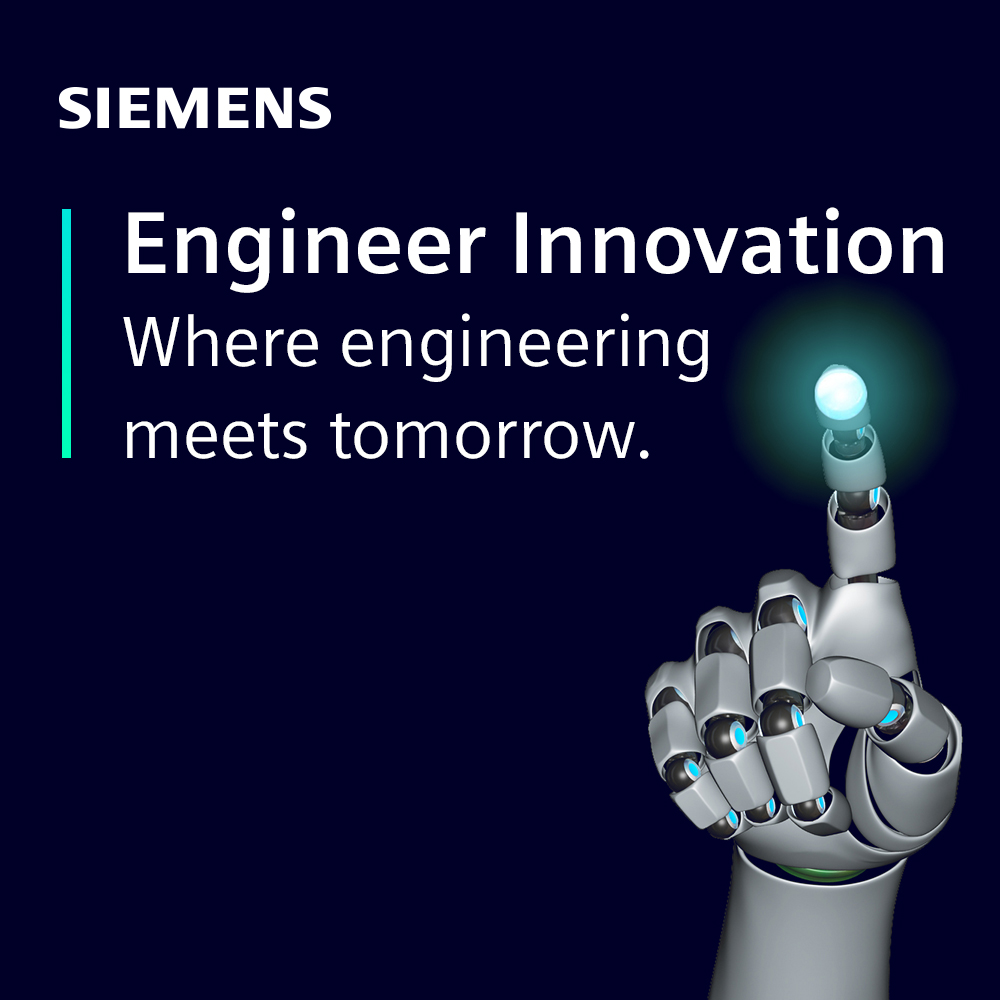
Engineer Innovation Podcast
A podcast series for engineers by engineers, Engineer Innovation focuses on how simulation and testing can help you drive innovation into your products and deliver the products of tomorrow, today.





